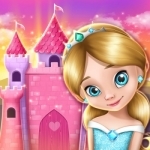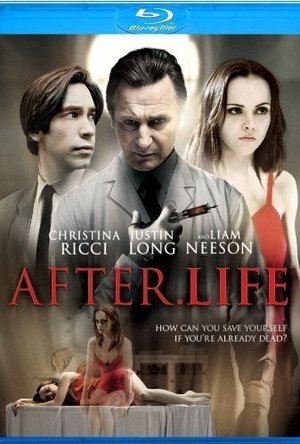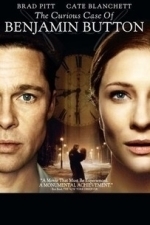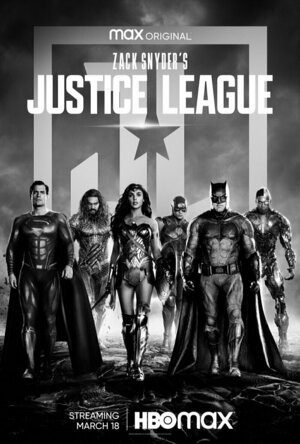Chris Sawin (602 KP) rated After.Life (2010) in Movies
Jun 23, 2019
When a film like After.Life is released theatrically, the part of me that loves horror films gets the best of me. It's true that most horror films turn out to be more terrible than you could ever imagine, but are pretty fantastic every once in a while. Fans of the genre live for the times a horror film not only lives up to expectations, but surpasses them. After.Life certainly looked to have potential, but wound up being another mediocre and predictable horror film.
The story is the film's biggest flaw. Although that is probably what will interest people and is what reeled you in (or pushed you away) judging by the trailer. The most interesting aspect of the film can really only go one of two ways. There's a 50/50 chance you already know how it ends. The film attempts to swerve you in a different direction once or twice, but is disproved as soon as the thought crosses your mind that something may happen you weren't expecting. It's like the film didn't wait long enough to let the swerve(s) sink in. Its predictability is too obvious to ignore even if you're somebody who doesn't try to figure out the ending before it happens.
I've always been picky when it comes to the use of CGI in films. Most of the time special effects that are used turn out looking cheap and take you out of the film since it's obvious the actor(s) is standing in front of a green screen and/or reacting to something that isn't there. I see movies to escape reality and it's hard to do that when crummy CGI takes me out of the film. As spectacular as the effects were in Avatar, they set the new standard as far as special effects go. While the special effects in After.Life are minimal, the scene featuring them is probably the weakest in the film.
Justin Long was pretty surprising. Judging by the trailer, his role seemed nearly identical to his role as Clay Dalton in Drag Me To Hell. While his role as Paul is similar, he showed a lot more emotion this time around. Long proved that he has more skill and is more talented than a lot of people (including myself) have ever given him credit for in the past.
After.Life isn't a terrible film, but is disappointing in comparison to what it could have been. Justin Long manages to outshine both Liam Neeson and Christina Ricci while the film's low budget is noticeable in its cheap but minimal use of CGI. While its premise may seem promising, After.Life is just another run of the mill horror/thriller. You do, however, get to see Christina Ricci bare it all for a good portion of the film. So it's not all bad.
BankofMarquis (1832 KP) rated The Curious Case of Benjamin Button (2008) in Movies
Mar 28, 2020
And...I'm glad I did...for I re-fell in love with the portions of the film that I remembered fondly while I was also able to see the flaws (mostly in pacing) that drops this film down a peg.
Based on the short story by F. Scott Fitgerald, THE CURIOUS CASE OF BENJAMIN BUTTON tells the tale of a man who ages backwards. His life is chronicled from his birth (right after the "Great War" ended in the 1919) and follows right up to his death.
As played by Brad Pitt in an Oscar nominated turn, the titular character is earnest, honest, somewhat naive and (as he gets younger) very attractive to look at. I've been a fan of Pitt's acting since the days of FIGHT CLUB and 12 MONKEYS (and think he deserved his Oscar for ONCE UPON A TIME IN HOLLYWOOD) and he does not disappoint in this film, especially since he has quite a few strong performers to play against (even while under heavy make-up).
Jared Harris, Taraji P. Henson (in an Oscar nominated performance) and Mahershala Ali all bring strong, winning performances but is the performances of 2 strong actresses that drew my attention to them from this point forward. Tilda Swinton (SNOWPIERCER) brings a sense of longing to her portrayal of a woman that Benjamin has a brief affair with. Their scenes together are touching and poignant with a sense of sadness that had me rooting for Swinton's character throughout.
But, it is the appearance of Cate Blanchette (THOR: RAGNAROK) that elevates this film for me. I had been a fan of Blanchette's since her Oscar winning role of Katherine Hepburn in THE AVIATOR, but this performance raised her abilities in my eyes and I eagerly await everything that she is going to appear in (including CAROL, a film that I loathe).
Director David Fincher (Se7EN, FIGHT CLUB) was also Oscar nominated for his work in this film and he blends a lifelong love story with events of the day while mixing in some wonderful CGI that helps age (or de-age) Benjamin as the film unfolds. This film, for me, was a departure for Fincher who I came to admire for his trippy films, but he brings a human-ness to the proceedings that helps ground the fantastical into reality.
Upon this viewing, I did find that this film does drag a bit at times - it is as if Fincher (and the cast) fell so in love with the characters and the scenes, that they lose track of the pacing, letting the film bog down from time to time. The film runs 2 hours and 46 minutes...and I think I could help find spots to trim about 20 minutes out of it.
The film did win in 3 of the 13 categories it was Oscar nominated in (it was nominated for BEST FILM, but did not win that award). The Oscar wins were all for special effects of some sort - and I kept looking to see if I could spot the tricks and Special FX in the film - and I could not. A good sign that this film is holding up 9 years later.
Take a trip through time (backwards) with Benjamin Button, it's is worth it.
Letter Grade: A-
8 stars out of 10 (and you can take that to the Bank(OfMarquis)

CompareMe Shopping Calculator
Shopping and Finance
App
CompareMe helps you to save money by comparison shopping. Compare products in different sizes in...
LeftSideCut (3776 KP) rated Zack Snyder's Justice League (2021) in Movies
Mar 18, 2021 (Updated Mar 19, 2021)
I still believe that the DCEU should have invested in solo movies for all it's big players before tackling a huge event like this, but there comes a time where I have to accept that that isn't what happened, so I watched this with that in mind, and left my bitterness at the door.
Zack Snyder's Justice League is undeniably a far superior, and vastly different beast to its predecessor. The 4 hour+ runtime gives the narrative plenty of breathing space, and allows the audience to connect with these characters properly. The biggest benefactor of this is Cyborg. A character that was more or less tossed to the side before, is given so much backstory, that he is now an integral part of the films emotional core. The Flash is another character that hugely benefits. Whereas before he was relegated to comedy relief and almost useless in the grand scheme of things, here, he's a young man who grows throughout the story from a joker, into an instrumental part of saving the world. The balance between all of these characters is well done actually - Batman doesn't feel like a waste, Wonder Woman is back to being a raging badass instead of moping over Steve Trevor - All of the League members feel important, and each bring their own strengths. They are portrayed as an effective team.
Main antagonist Steppenwolf is much better realised. He visually looks a hundred times better than whatever the fuck we got back in 2017, and he feels like an actual threat. His evil scheme makes sense this time around whereas before it was an ill explained mess. It feels like the stakes are high.
The set pieces we get are pretty spectacular. The new stuff is a treat to watch, and the familiar stuff has been reworked so well. The action heavy scenes involving Steppenwolf in Themyscira, and when the League first take him on below Striker Island are absolutely thrilling. In the original cut, I'd argue that the scene immediately following Superman's revival was the most exciting in terms of action, but here, it's probably the most lackluster in comparison. It's spaced out nicely, and the screenplay is incredibly engaging. The humour is seldom but funny when it happens, and the more emotional moments are well executed. All of this combined results in a story that never feels like a drag. The four hours flew by pretty quickly, and it's all complimented by a wonderful music score.
In terms of wider DC material, there's a whole wealth of stuff for comic fans to enjoy - Darkseid using his angular beams, the introduction of Ryan Choi aka The Atom, Martian Manhunter, and the extended Knightmare sequence where Batman and The Joker converse about events that have happened in the past. All good stuff that makes the DCEU finally feel like a connected narrative.
Overall, Zack Snyder's Justice League does a pretty damn good job at delivering an event movie that is bittersweet. It's great to see Snyder's original vision realised (although I can understand how it may not have resonated with a wider audience - it's most definitely a movie for fans of DC comics), but it's all a setup for a sequel that will probably never happen, which is a great shame. This is what happens when studios stick their ore in too much!
Final note - it makes me really happy that Alfred addresses Superman as 'Master Kent'.

CalenGoo Calendar
Productivity and Business
App
CalenGoo gives you a fast and easy way to access and modify your Google Calendar with your iPhone,...

Princess Doll House Games: Design and Decorate Your Own Fantasy Castle for Kids and Girls
Lifestyle and Games
App
▶▶▶ Start your own kingdom with a princess castle in new free house design games! ◀◀◀ *...

AmpliTube Acoustic
Music and Entertainment
App
THE NO#1 TONE STUDIO HAS GONE ACOUSTIC! CONNECT YOUR GUITAR, UKULELE OR OTHER INSTRUMENT TO YOUR...

AmpliTube Acoustic FREE
Music and Entertainment
App
THE NO#1 TONE STUDIO HAS GONE ACOUSTIC! CONNECT YOUR GUITAR, UKULELE OR OTHER INSTRUMENT TO YOUR...

Awesome Shape Puzzles 123
Games and Education
App
- Let learning become your children's favourite pastime with this fun shape puzzle game that doubles...

Drums - Learn Lessons & Practice Drumming Drum Skills Rhythm Training Teach Music Patterns Educational with Purely Sight Reading Metronome
Education and Music
App
Purely Drums is designed to help you become a better drummer. By repeatedly practising the routines...


